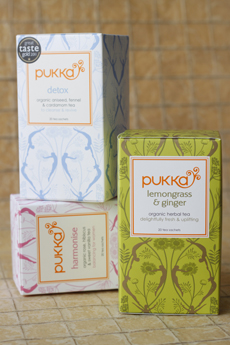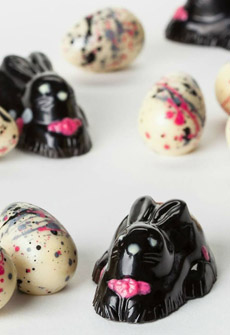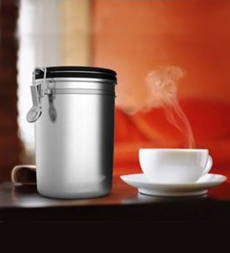
Asparagus and carrots in a Le Creuset dutch
oven. Photo courtesy Sur La Table. |
|
The English word “asparagus” derives from the Latin sparagus, derived from the Greek asparagos, which itself derived from the Persian asparag, meaning sprout or shoot. The stalks shoot up from the crown of the plant and, if not harvested, the precious tips grow into fern-like leaves.
That little tidbit is an introduction to asparagus season. If you’re an asparagus lover, it’s a great time: prices are lower and the flavor is better, since domestic asparagus get to market faster (Peruvian imports, for example, travel weeks by ship).
Whether you’re looking for different ways to serve asparagus, or a way to cut down on the cost per portion, serve a medley—asparagus with one or two other vegetables.
We were especially attracted to this handsome combination of asparagus and carrots from Sur La Table, with the carrots cut in lengths to match the shape of asparagus.
But a memorable spring medley is the “big four” of spring: asparagus, garlic scapes, morel mushrooms and ramps (wild leeks).
Otherwise, take a look at our list of vegetables by color, and pick your own medley.
|
|
WHAT’S A MEDLEY?
A medley is a mixture of different things: music, sports, vegetables, whatever. The word comes from the French medler to mix, which entered Middle English.
A vegetable medley provides the opportunity to create more interest through blending flavors, colors and textures.
You can grill, roast, sauté or steam your veggies—or enjoy them raw, as crudités with a dip.
Most people believe that the finest texture and the taste come from the asparagus tips. They are called points d’amour (“love tips”) in French.
But we enjoy the whole asparagus, including the texture of the stems. Just trim the white stem ends, which are tough.
Asparagus Recipes
Asparagus Crostini With Pancetta & A Parmesan Crisp (recipe)
Asparagus & Grapefruit Salad (recipe)
Asparagus With Linguine & Parma Ham (recipe)
12 More Easy Asparagus Recipes—including frittata, grilled, risotto, sautéed, scramble, sides and spring rolls
|
|
A BRIEF HISTORY OF ASPARAGUS
Asparagus has been enjoyed as a vegetable since ancient times. The earliest image is as an offering on an Egyptian frieze dating to 3000 B.C.E. It was also enjoyed in ancient Greece, Rome, Spain and Syria.
Greeks and Romans ate asparagus fresh in season and dried in winter. The Romans would even freeze it high in the Alps: Emperor Augustus created the “Asparagus Fleet” for transporting the vegetable, and coined the expression “faster than cooking asparagus” to indicate a quick action. [Source: Wikipedia]
There’s a recipe for cooking asparagus is in the world’s oldest surviving cookbook, Apicius’s “De Re Coquinaria” (“On Cookery”), Book III. It is attributed to a first-century Roman epicurian named Marcus Gavius Apicius, but compiled sometime between the third and fifth centuries.
|
|

The three colors of asparagus. Photo courtesy Australian Asparagus Growers.
|
|
And it’s still in print—in the original Latin! There’s an English translation for $10.95, and a translated Kindle edition is free!
After the fall of the Roman Empire, asparagus seems to have fallen out of favor, reappearing in France in the 15th century and in England and in Germany in the 16th century. It arrived in the U.S. around 1850, and has resumed its position as a sought-after vegetable.
So don’t let the season escape you: Pick up asparagus on your next trip to the market. It has just three calories per spear, so you don’t need to worry about portion control.
|
|









